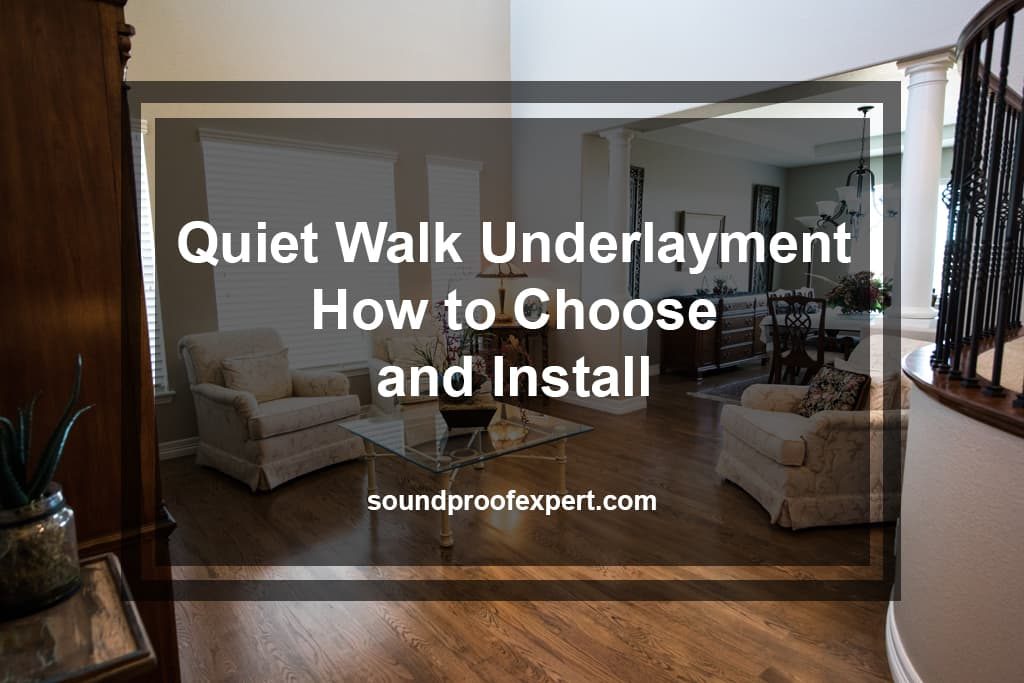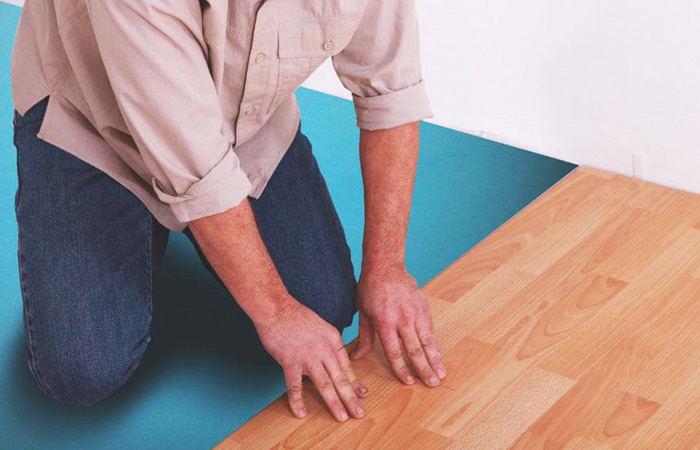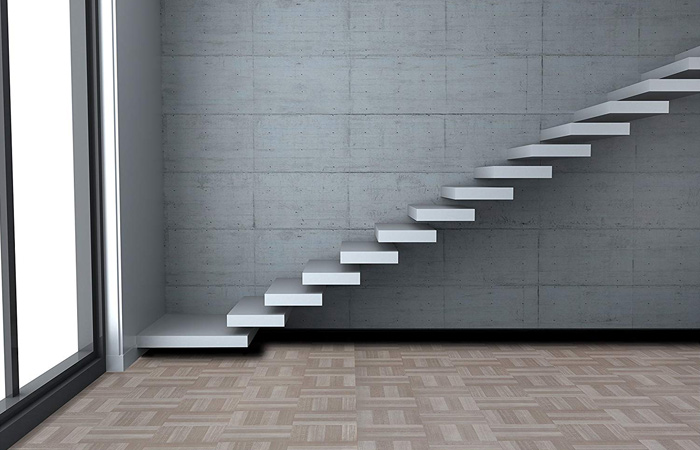
MP Global Products is the manufacturer of the flooring product named Quiet Walk. MP Global Products, based out of Norfolk, Nebraska, has sold and operated Quiet Walk underlayment since 1997. This underlayment is often marketed as a fix-all product for the most common issues with laminate flooring.
It’s said that by installing Quiet Walk, you can reduce the noise from your floors with sound absorption; it protects against moisture and can be used to insulate your home.
What is Quiet Walk Underlayment?
There is a layer between your floor and your sub-floor, and it’s called underlayment. Underlayment is typically made from foam, felt, rubber cork, cork, or rubber.
When purchasing new flooring, it may come with an underlayment already attached. If it doesn’t, then you’ll need separate underlayment. The underlayment is important because it provides softness and warmth and increases the life of your new flooring.
Benefits to Quiet Walk Underlayment
Underlayment isn’t only something that you throw down under your flooring; it has many purposes:
- Provides stability and support for your flooring
- Minimizes the sounds caused by footsteps
- Resists moisture
- Helps smooth imperfections to the subfloor
- Reduces transmission of impact sounds
- Adds some softness to the flooring
- Increases the life of your flooring
The underlayment works as a protective barrier between your subfloor and the floor. Floating floors are prone to contraction and expansion as temperatures change. With underlayment, you get a barrier to protect your floor from the friction of movement, which keeps your floor in one place during shifting.
Where Should I Install Quiet Walk Underlayment?

Because underlayment is the layer beneath your flooring, you can install it anywhere in your house. You will almost always need underlayment with your new flooring unless it comes with an underlayment already attached.
In addition to the underlayment, you often will need to install a vapor barrier in bathrooms, kitchens, and basements. This helps protect your flooring from moisture.
Now that you know what Quiet Walk underlayment is, let’s talk about how to install it.
What You’ll Need
- Scissors
- Vinyl tape
- Measuring tape
Step 1: Prepare the Sub-Floor
You should remove all of the preexisting floorings before you begin installing the underlayment. Make sure to check the floor for any loose material or raised nails. These things can result in a non-smooth surface. Once you’ve done this, you’ll want to sweep the floor to get rid of any remaining dust and dirt.
Step 2: Open the Package
This step involves opening the Quiet Walk package. To start, you’ll want to review the packing slip to make sure that everything is accounted for. Find the directions that are included in the packaging and read them over to help you figure out what tools you’ll need to install the underlayment. Get rid of any unnecessary packaging from the area where you’ll be installing the underlayment to make sure that any loose materials aren’t left under the Quiet Walk.
Step 3: Roll Out the Underlayment

Make sure that the blue surface of the underlayment is facing up. The outer edge of the underlayment should be about a half-inch away from the walls, and this is to allow the underlayment to settle without bunching up.
The Quiet Walk underlayment should be butted together but never overlapped. Once you have the Quiet Walk underlayment butted together, you’ll want to use heavy-duty vinyl tape to seal the material together. You’ll then install your laminate flooring on top of the Quiet Walk underlayment.
How to Choose Quiet Walk Underlayment
The type of underlayment that you purchase should be based on the type of floor chosen, the environment that it’s being installed into, and your personal needs for space. With this being said, let’s go over how to choose the best Quiet Walk underlayment for your project.
Laminate Flooring
Foam is a fan favorite when it comes to laminate flooring. Foam comes with a variety of options as an underlayment and provides amazing sound absorption. If you’re installing laminate floors in any area that is prone to moisture, like bathrooms, basements, and kitchens, you should use a foam underlayment that comes with a vapor barrier attached.
If your main concern is dealing with sound transmission, it’s recommended that you use a cork underlayment, which offers more sound absorption.
Vinyl Flooring

The very first thing that you should do if you’re putting down vinyl flooring is to take a look at the manufacturer’s warranties and instructions. Some warranties can be voided if you use certain underlayment’s.
If you can purchase underlayment, cork is recommended. With cork, you don’t have the constant fear of damaging or staining the vinyl. If you aren’t able to use an underlayment, you’ll probably still want a vapor barrier underneath the flooring.
Several vinyl flooring options on the market come with a cork underlayment already attached. This is good news because you might not have to purchase a separate underlayment to go with your new flooring.
The types of underlayment you should avoid if you’re putting down vinyl flooring is rubber cork and rubber. This is because there is a possibility of the rubber staining the vinyl. However, felt, foam, and cork are typically safe to use with vinyl flooring unless the manufacturer states otherwise.
Tile Flooring
If you’re laying down tile flooring with a thin set, the best underlayment is a rubber cork underlayment. With ceramic tiles, you do have the option to install the tiles directly over the cement or plywood board. However, rubber cork underlayment is designed for crack suppression.
Wood Flooring
If you’re installing wood flooring, whether it’s engineered or hardwood wood flooring, it’s recommended that you use foam or cork underlayment.
However, the foam does give more than cork does, so while it’s a popular option, it’s recommended that you use cork with wood flooring. Cork has less give, which makes it flex less under your flooring.




Hi Jim,
Does acoustic underlay work to block out noise coming from neighbours living in the apartment below? We have carpet in our apartment but downstairs have floorboards and the sound travels through our floor and really bothers us. We can also hear almost every word they say….
Any suggestion would be greatly appreciated.
Thanks,
Vanessa